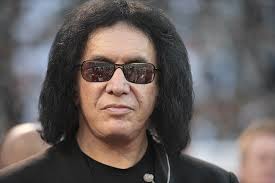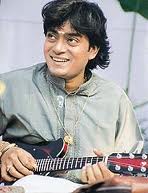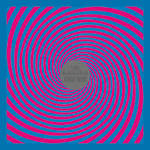
Gene Simmons
IN a controversial interview recently published in Esquire magazine, Gene Simmons of the 70s band Kiss declared that rock music is dead. Besides talking of how technology-driven practices like downloading and file-sharing have had an adverse effect on the industry, he says that what’s lacking is the presence of iconic musicians in the newer generation.
On the one hand, Simmons points out, the period between 1958 and 1983 had numerous musicians who were “unanimously considered classic, timeless, revolutionary.” The examples he cites are Elvis Presley, the Beatles, Michael Jackson, the Rolling Stones, Bob Dylan, Madonna, the classic Motown artistes, Prince, Pink Floyd, so on and so forth. In contrast, in the period after the 1990s, he thinks Nirvana is the notable exception. “Where’s the next Bob Dylan? Where’s the next Beatles? Where are the songwriters? Where are the creators?” he asks.
Obviously, the interview has generated extreme reactions. While the old-timers would tend to agree with his views, the younger audiences would find the statement far-fetched and old-school, and say that post-1985 bands like Guns N’ Roses, Metallica, Red Hot Chili Peppers, Dream Theater and Radiohead are legendary in their own right. To each his own.
But the truth is that as a general statement, what Simmons has said is not off the mark in the sense that the past three decades or so haven’t produced the kind of legends that the earlier period did. After all, most of the new bands just carried forward the sound created by earlier masters like Deep Purple, Led Zeppelin, Black Sabbath and Pink Floyd.
At the same time, to declare that rock music is dead is preposterous, simply because one hears a whole bunch of younger, talented musicians these days – acts like Muse, Richard Hawley, Wilco, Jack White, the Black Keys and John Mayer. They may not be innovators or path-breakers like the 1960s brigade, but they do produce some great songs and highly listenable albums, and that matters more than anything else.
—
If one were to extend Simmons’ theory to other genres – both international and Indian – the same conclusion can be arrived at.
Let’s take western classical music, to begin with. Most of the innovation actually took place from the late 18th century to roughly 1950. Today, most concerts feature works of older composers like Mozart, Beethoven, Tchaikovsky and Brahms, probably ending with early 20th century names like Stravinsky, Edward Elgar and Shostakovich. Though later-day composers like Aaron Copland, Benjamin Britten and Karl Jenkins did some amazing work, a majority of the repertoire played belongs to the older creators.
Even among conductors, there is no one in the contemporary lot whose name carries the same weightage as Leonard Bernstein, Herbert von Karajan, Clive Davis or Georg Solti. A violinist like Yehudi Menuhin, a cellist like Mtistlav Rostropovich, a pianist like Daniel Barenboim, a tenor like Luciano Pavarotti or a soprano like Maria Callas is hard to find today, even though there are scores of musicians who play these instruments brilliantly or have an equal depth in their voices.
In jazz, the biggest innovators thrived between 1930 and 1975 – singer-trumpeter Louis Armstrong, bandleader Duke Ellington, trumpeters Dizzy Gillespie and Miles Davis, vocalists Ella Fitzgerald and Billie Holiday, pianists Thelonious Monk, Dave Brubeck and Herbie Hancock, saxophonists Charlie Parker, John Coltrane and Stan Getz, guitarists John McLaughlin and Al Di Meola, and jazz-fusion band Weather Report, to name some.
Today, there are hundreds of jazz virtuosos, each of whom beats the other in terms of sheer technique and wizardry. But will they be able to set the standards of the past masters? Trumpeter Wynton Marsalis and singer Diana Krall are among the exceptions, rather than part of a recurring trend.
The blues has a similar story to tell. The game changers included Robert Johnson, Elmore James, BB King, Muddy Waters, John Lee Hooker, Howlin’ Wolf and Buddy Guy, who had all peaked before the 1970s began. In country music, when was the last time we had someone of the calibre of Johnny Cash, Willie Nelson, Waylon Jennings, Loretta Lynn or John Denver? Or someone like Bob Marley, Peter Tosh and Jimmy Cliff in reggae?
A similar argument holds true with Indian music. In Hindi film music, the real path-breaking work was done between 1950 and 1975 by composers like Naushad, Anil Biswas, SD Burman, C Ramchandra, OP Nayyar, Shankar-Jaikishen, Madan Mohan, Ravi and Salil Chowdhury, to be followed by RD Burman, Laxmikant-Pyarelal and Kalyanji-Anandji. Most composers after the 1990s, from AR Rahman and Nadeem-Shravan to Jatin-Lalit and Amit Trivedi, have had their good phases, but those who have grown up on the earlier masters will know the real difference.
In singing, the contributions of Lata Mangeshkar, Mohammed Rafi, Kishore Kumar, Mukesh, Asha Bhosle, Geeta Dutt and Talat Mahmood are admired even five or six decades later. Likewise with lyricists like Shakeel Badayuni, Sahir Ludhianvi, Shailendra, Rajinder Krishan, Harsat Jaipuri, Majrooh Sultanpuri, Anand Bakshi and Gulzar.
Move over to Hindustani classical music, and one can safely argue that among vocalists, it’s difficult or even impossible to produce another Bade Ghulam Ali Khan, Amir Khan, Omkarnath Thakur, Bhimsen Joshi, Kumar Gandharva, Mallikarjun Mansur, Kesarbai Kerkar, Kishori Amonkar, Jasraj or Parveen Sultana. Yes, there are some really outstanding singers today, like Rashid Khan, Ashwini Bhide-Deshpande, Jayateerth Mevundi, Shubha Mudgal, Ulhas Kashalkar, Venkatesh Kumar, Kaushiki Chakraborty and Sawani Shende, but despite their brilliance, it would be unrealistic to say they will replace the older legends.
The same is the case with Hindustani instrumental music and percussion, where sitar maestros Ravi Shankar and Vilayat Khan, sarod monarch Ali Akbar Khan, flautists Pannalal Ghosh and Hariprasad Chaurasia, shehnai king Bismillah Khan, santoor genius Shivkumar Sharma, and tabla greats Allarakha and Zakir Hussain have all done wonders. In Carnatic music, there can never be another MS Subbulakshmi, Semmangudi Srinivasa Iyer, violinist Lalgudi Jayaraman, flautist N Ramani, saxophonist Kadri Gopalnath or the relatively younger mandolin master U Shrinivas. In ghazals, can we have another Mehdi Hassan, Jagjit Singh, Begum Akhtar or Ghulam Ali? Today, Pankaj Udhas is the only ghazal singer who regularly draws a full house.
—
KEEPING Simmons’ ‘rock is dead’ theory in mind, one can easily declare that classical is dead, jazz is dead, blues is dead, country is dead, reggae is dead, Hindi film music is dead, Hindustani classical is dead, Carnatic is dead and ghazals are dead. All these genres are as affected by downloading and file-sharing as rock music, and none of them produce the kind of icons that one heard 40 or 50 years ago.
Yet, that approach would be rather pessimistic and unfair. After all, in the past two decades or so, there have been various changes in the field of music, right from the kinds of sound created by musicians to the tastes of the audiences to the technological platforms on which the music is available to the way the music is marketed and promoted.
Like in other fields, supply in music is dependent on the demand. Over the years, there has been a drastic fall in the number of serious listeners, and in the number of listeners who are truly passionate about music.
To appreciate in-depth genres like western classical, jazz, Hindustani, Carnatic and ghazals, audiences should be clued in to the nuances. Unfortunately, relatively fewer people today understand the harmonies used in a western symphony, the improvisational technicalities of jazz, the intricacies of a Hindustani or Carnatic raga or the meaning of high-quality Urdu poetry. Overall, music appreciation has become superficial.
To cater to the newer audiences, artistes are forced to adapt or make sacrifices which try to impress with gimmickry or dilute the purity of the art form. In the world of jazz, Indi-fusion and even Indian classical, there has been an increasing emphasis on showmanship, which today’s listeners are sadly relating to and applauding.
These days, people have entertainment alternatives beside music. Many youngsters prefer to spend their time on television, gaming, computers, movies or even window-shopping at malls, as compared to music. Peer pressure also plays an important role. So even if they attend concerts, they will go for a happening rock show, dance music marathon, Bollywood nite or club gig than have a serious auditorium experience.
Unlike in the past, when music lovers collected physical copies of vinyl records, cassettes or compact discs, they store the music digitally on computers and mobile devices today. No matter how hard one tries, these newer avenues just don’t result in the same feel.
Finally, most music that works today does so because it is part of a trend. Electronic dance music (EDM) is the current rage, but the people who listen to that go more for the experience and the ambience than to understand what is being played. The disc jockeys have become superstars, though the crowd cannot often tell the difference of one from the other. Hip-hop grew as a street language and a form of rebellion, but today, people listen to it just because everyone else is listening to it. In India, we have so many fans of Sufi music, when 95 per cent of them don’t understand what the great poets Amir Khusro, Baba Bulleh Shah or Hazrat Shah Hussain talked about.
In contrast to a majority of today’s music, a large percentage of older music had the right feel and emotion. Whether it was rock, classical, jazz or country, Hindi film music, Hindustani, Carnatic or ghazals, it struck a chord and caressed your heart. And because of that, it has had longevity. Even today, we still listen to ‘Aradhana’ or ‘Abhimaan’, when we have almost stopped hearing last year’s biggest hit ‘Aashiqui 2’.
—
DESPITE the fact that everything goes in favour of the older music, would it be fair to say that rock – or any other genre – is dead? Maybe it isn’t as charming as it once used to be, but it still has its moments.
Iconic or not, path-breaking or not, every generation has its own set of highly talented musicians. If today’s lot hasn’t been able to create the same kind of revolution, it’s because their predecessors practically did everything. Over the years, whatever needed to be innovated in music, has already been done. Today, there is hardly any scope for creating a new sound or sub-genre, without being in some form influenced by the past.
As such, it would be ridiculous to expect contemporary musicians to have the same kind of landmark achievements as the previous lot did. As long as they produce good music, it shouldn’t be matter. If they don’t, one always has the option to listen to someone else. With the right ear and approach, one will always find a lot of good things to hear. It’s important to have an open, progressive mind and give today’s music a chance.





